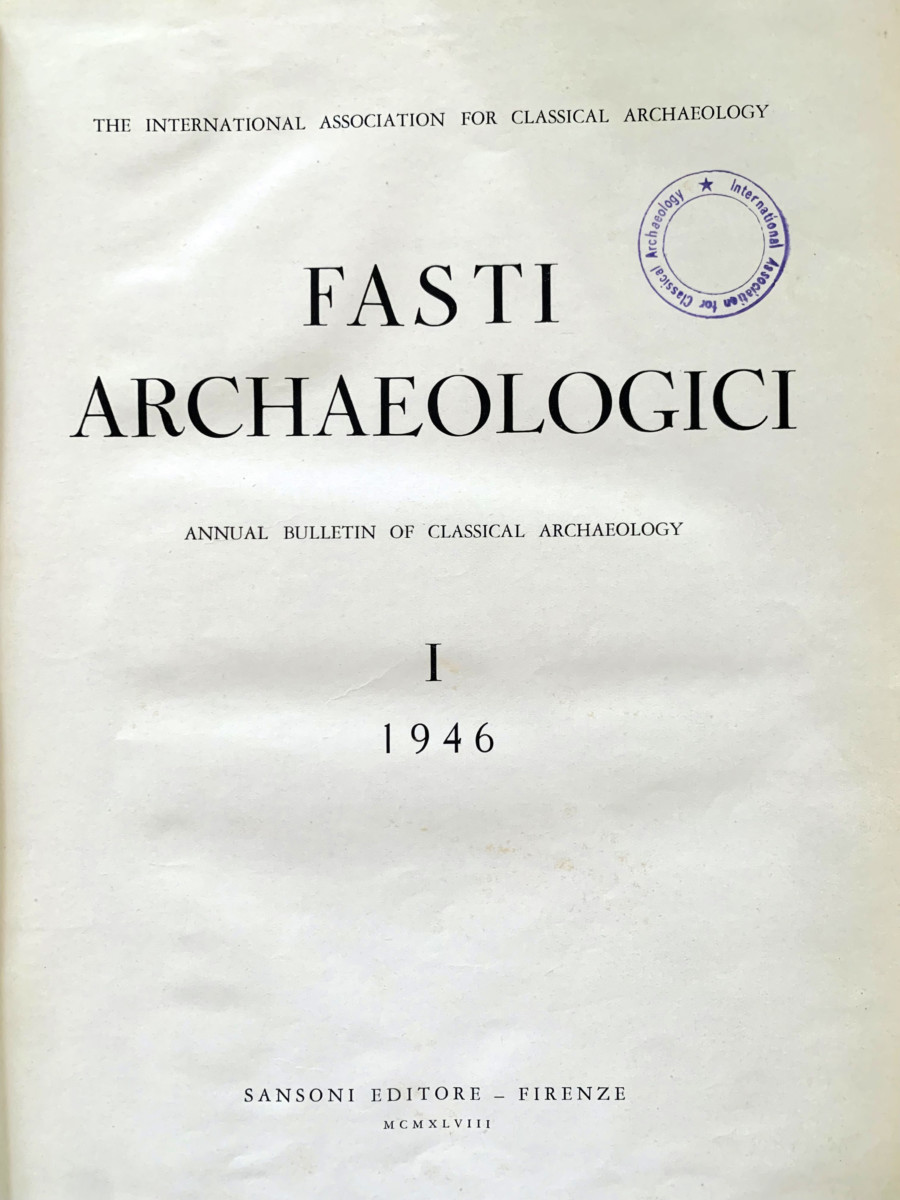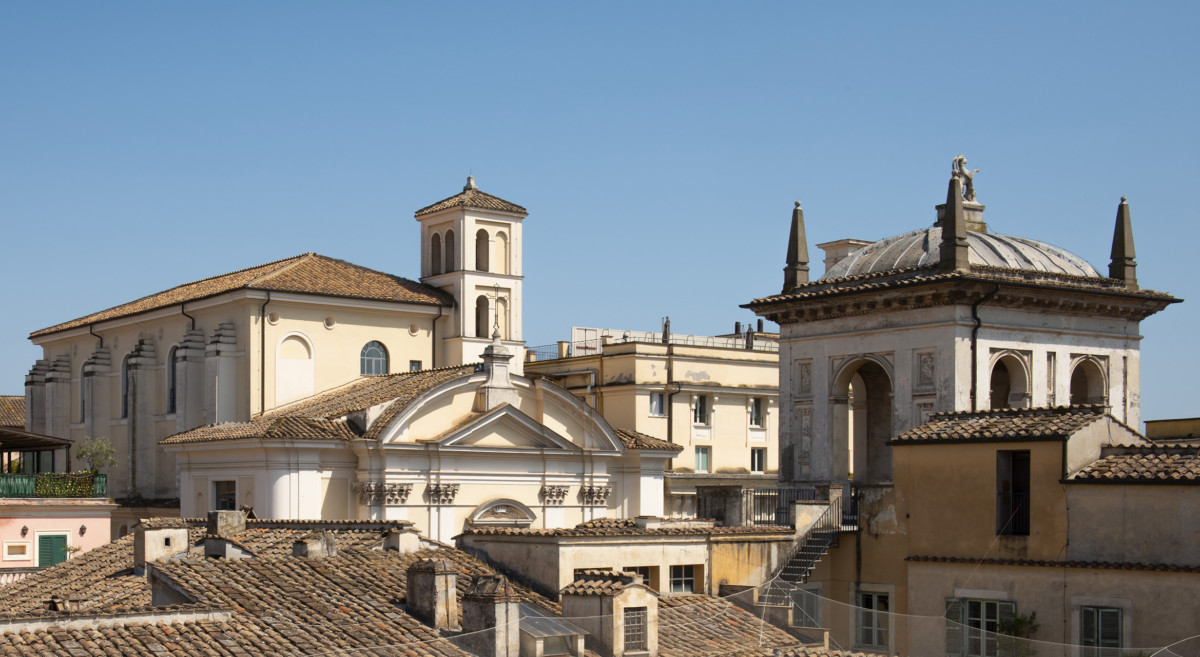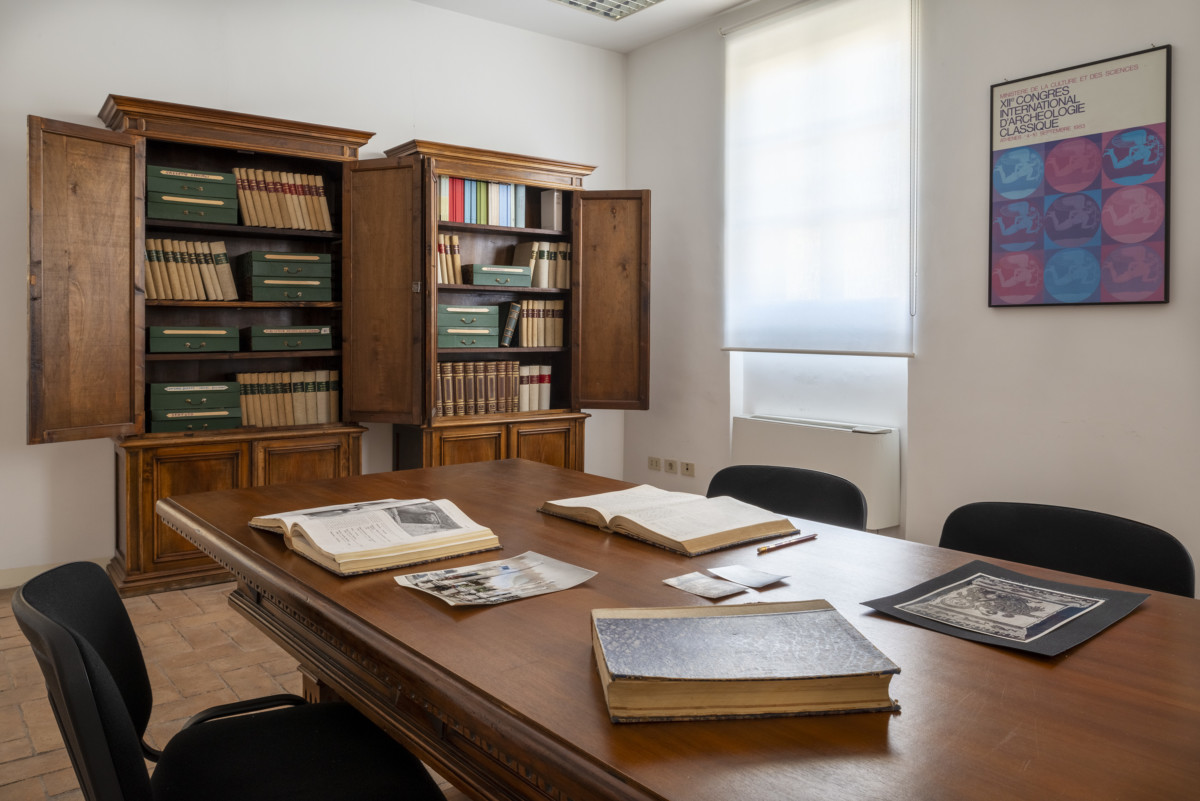The foundation of AIAC in 1945 has to be seen in the context of the lively ferment of cultural renaissance as peaceful international relations were established in post-war Rome. This was an extremely favourable moment for the birth of an organization because of the numerous foreign scholars already present in Rome during the war, and those who would reach it in the footsteps of the allied troops.
Ideally the history of AIAC began in 1823, when four Nordic intellectuals, A. Kestner, O. Magnus von Stackelberg, E. Gerhard and Th. Panofka, met together to read the classics and explore the antiquities of Rome and its neighbourhood, founding the ‘Circle of Hyperborean Romans,’ named for a mythical people found at the edges of the inhabited world. Within this friendly society, animated by dilettantes and amateurs but inspired by serious scientific interests, there quickly grew a need for a greater diffusion of information about archaeological discoveries.
The project for an international archaeological society, strongly pushed by Gerhard, came to fruition in 1829 when, thanks to the heir to the Prussian throne Frederick Wilhelm, the first Institute of Archaeological Correspondence was founded. Its principle object was to collect and publish through its own journals (Bollettino Monumenti Inediti, Annali) illustrations of monuments and new discoveries, coming in through an extensive network of corresponding members: a further addition was the creation of catalogues of museum collections.
In time, the Institute, based at Palazzo Cafferelli on the Capitoline Hill, became an important centre for archaeological studies in Rome. Blessed with a sizable library, in 1871 it was nationalized, becoming one of the scientific institutes of the new German empire and renamed the German Archaeological Institute.
Seventy five years later, the same principle of internationalization of archaeological studies was the basis for the foundation of the International Association for Classical Archaeology (AIAC), that can be considered the spiritual heir of the Institute of Archaeological Correspondence. In 1945, with the adhesion of Dutch, Belgian, and Romanian scholars the project that a little nucleus of Italian, Swiss, American, English and Swedish scholars had elaborated at the end of the previous year was carried out. This was the creation of an association that would harbour and increase the sentiments of international collaboration and cultural community that was the reply of the scientific community to the horrors of war.
The committee, established the 8th of December 1944, elected as its first president Erik Sjöqvist, director of the Swedish Institute of Classical Studies. On the 5th of May 1945 AIAC was officially created, with the registration of its by-laws.
The primary activities of AIAC in its first years were the co-ordination and care for the archaeological libraries of Rome and the publication of information through the archaeological communities of all countries involved in Classical Antiquity. The second task was carried out through the publication of the review Fasti Archaeologici. Annual Bulletin of Classical Archaeology, founded by Massimo Pallottino. The review intended to collect and diffuse in the most complete way possible every new archaeological find, along with resumés of publications. Ahead of its time was the choice of using English for maximum readership. The series consists of 41 volumes, directed first by Pallottino himself, then by Giovanni Forni from 1957 to 1979 and finally by Maria Floriani Squarciapino between 1982 and 1997. The print publication was suspended in 1997. Today, the Photographic Archive of the American Academy in Rome preserves the majority of the iconographic material published in the Fasti. The series was replaced by the Fasti Online and the journal FOLD&R.




